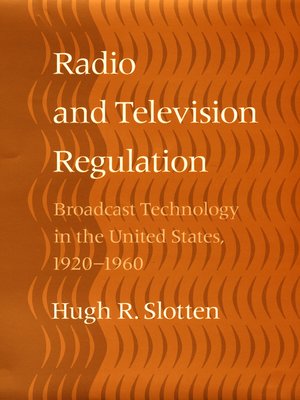Radio and Television Regulation
ebook ∣ Broadcast Technology in the United States, 1920-1960
By Hugh R. Slotten

Sign up to save your library
With an OverDrive account, you can save your favorite libraries for at-a-glance information about availability. Find out more about OverDrive accounts.
Find this title in Libby, the library reading app by OverDrive.



Search for a digital library with this title
Title found at these libraries:
| Library Name | Distance |
|---|---|
| Loading... |
From AM radio to color television, broadcasting raised enormous practical and policy problems in the United States, especially in relation to the federal government's role in licensing and regulation. How did technological change, corporate interest, and political pressures bring about the world that station owners work within today (and that tuned-in consumers make profitable)? In Radio and Television Regulation, Hugh R. Slotten examines the choices that confronted federal agencies—first the Department of Commerce, then the Federal Radio Commission in 1927, and seven years later the Federal Communications Commission—and shows the impact of their decisions on developing technologies.
Slotten analyzes the policy debates that emerged when the public implications of AM and FM radio and black-and-white and color television first became apparent. His discussion of the early years of radio examines powerful personalities—including navy secretary Josephus Daniels and commerce secretary Herbert Hoover—who maneuvered for government control of "the wireless." He then considers fierce competition among companies such as Westinghouse, GE, and RCA, which quickly grasped the commercial promise of radio and later of television and struggled for technological edge and market advantage. Analyzing the complex interplay of the factors forming public policy for radio and television broadcasting, and taking into account the ideological traditions that framed these controversies, Slotten sheds light on the rise of the regulatory state. In an epilogue he discusses his findings in terms of contemporary debates over high-resolution TV.







